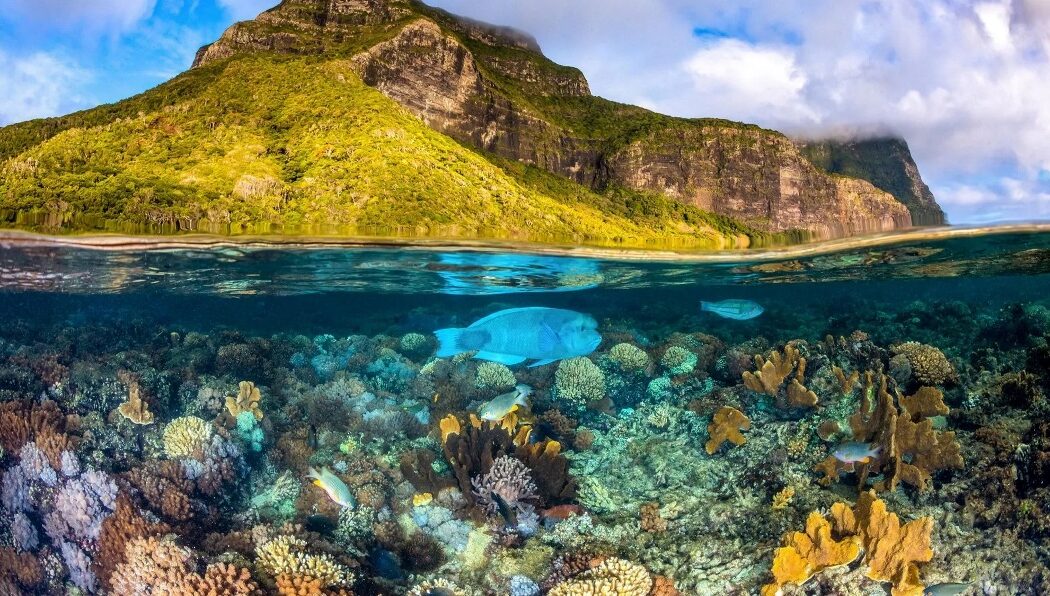Projects of the regenerative non-profit group, Island Conservation, has appeared in REVITALIZATION many times over the years. They are doing the absolutely crucial work of restoring the ecology of islands worldwide by removing human-introduced invasive species (like rats, goats, cats, etc.) that have been obliterating native biodiversity.
Many threatened species – including birds, turtles and iguanas – become prey for invasive predators.
Fortunately, those creatures can be protected through invasive species removal. Once predator-free, an island can recover and return to a state of wild.
But did you know that rewilding islands has dramatic benefits that reach far beyond individual plants and animals?
Restoring islands has wonderful effects for many interconnected ecosystems, creatures and people! Everything is connected – which is why the Island-Ocean Connection Challenge (IOCC) calls for island communities, governments and nonprofits to restore at least 40 islands by 2030 to benefit wildlife, oceans and people.
Here’s how restoring one island revitalizes on a larger scale:
1. Global biodiversity is conserved and enlarged
Restored and rewilded islands can conserve critical terrestrial and marine ecosystems, helping vulnerable species thrive.
Many prioritized islands are in global Key Biodiversity Areas, which are some of the most important biodiversity habitats in the world.
The IOCC is a commitment to protect at least 250 at-risk wildlife species that are vital to global biodiversity.
Removing invasive species within island-marine ecosystems can provide refuge for animals and plants under threat.
2. Crucial “connector” species contribute to multiple ecosystems
When these habitats rebound, the relocation and restoration of significant “connector” species becomes possible.
Sea turtles, land crabs, seabirds and seals play a vital role in island-marine biodiversity. For example, seabirds connect land and ocean. They travel great distances to deposit rich nutrients on remote islands, which in turn supports the surrounding marine organisms.
These interconnected systems continuously flow into one another, ensuring a diverse range of fauna and flora.
3. Marine organisms, plant life and animals recover
Island-to-ocean restorations benefit coral reefs, seagrass meadows, mangroves, and countless other elements of marine ecosystems.
In fact, damaged coral reefs have been shown to heal four times faster when their adjacent island-marine ecosystems are restored and protected.
When these delicate lifeforms are protected, fish and other sea creatures flourish along with them. Everything is connected!
4. Local economies and individual livelihoods expand
Island communities are disproportionately impacted by failing ocean health, climate change and biodiversity extinction – not just ecologically, but economically too.
These community members often rely on thriving island-marine ecosystems to earn a living, from fisherman and lobster catchers to tourism-based businesses and entrepreneurs.
Every Island Conservation project begins by listening to and understanding the needs of the people at the center of these environmental concerns so we can best support their goals.
5. The effects of climate change are mitigated
Restored and protected island-ocean ecosystems offer nature-based solutions for climate change adaptation and mitigation.
Restoring islands and their habitats stimulates new carbon sequestration through flourishing native plant life and island-ocean ecosystem processes.
Carbon-rich habitats like the reefs, mangroves and seagrasses mentioned above are powerful blue carbon “sinks” that absorb and store carbon.
They can also limit soil erosion and flooding in the face of rising sea levels, thereby offering further protection for island communities.
Photo courtesy of Island Conservation.
This article by Matt van Onselen originally appeared on the Island Conservation website. Reprinted here (with minor edits) by permission.

